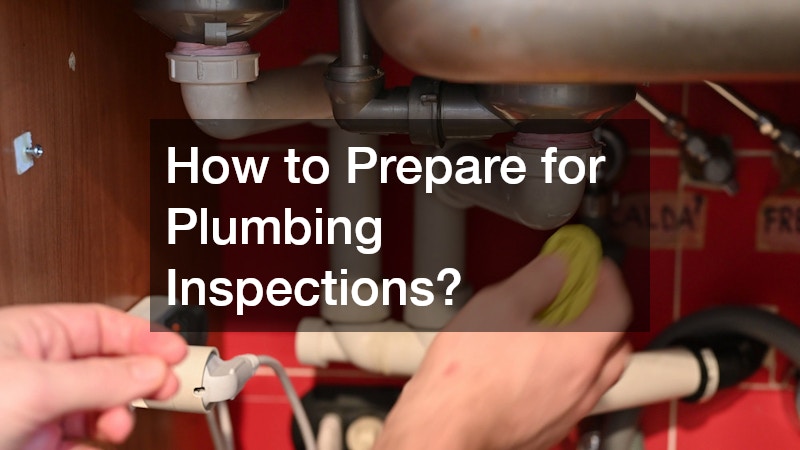Plumbing Tips That Prevent Common Remodel Delays
Home remodeling always feels exciting at the beginning—new layouts, updated materials, and the promise of a more functional space. But even the most carefully planned renovation can run into trouble when unexpected plumbing issues emerge. Because plumbing interacts with nearly every major system in a home, a single overlooked detail can stall progress for days or even weeks. Whether it’s outdated supply lines, hidden leaks, incorrect fixture placement, or an underperforming drainage setup, these disruptions create unnecessary stress for homeowners and contractors alike. Taking the time to understand potential challenges allows you to make decisions that keep your project moving forward.
Another reason plumbing deserves so much attention is that it rarely exists in isolation. During major remodels, homeowners may be coordinating with plumbers, plumbing contractors, kitchen designers, or even a restoration company if previous damage is uncovered during demolition. If your property has a history of leaks, mold, or structural deterioration, you may even find yourself interacting with experts who provide local water restoration or broader restoration services. Knowing how these pieces fit together can prevent the kind of chain reaction that turns a simple update into a stressful ordeal. With the right preparation, the right plumber, and the right expectations, you can avoid delays and ensure your renovation stays on schedule from the first day to the final inspection.
How to Choose the Right Plumbing Fixtures?

Understanding Different Types of Fixtures
Selecting plumbing fixtures isn’t just about the style you like—functionality, durability, and compatibility with your layout matter just as much. Modern homeowners have access to a wide range of faucets, sinks, showerheads, and specialty fixtures designed to enhance convenience and improve water efficiency. But every fixture places specific demands on your plumbing system. For example, a touchless faucet may require proper electrical access nearby, while a deep farmhouse sink may need modification to your existing drain height. These details become even more important when you’re coordinating with plumbers or plumbing contractors who must integrate your choices into your remodel’s overall design.
Budgeting for Plumbing Fixtures
Fixtures range widely in price, and many homeowners underestimate how quickly the costs can add up. Beyond the sticker price, there are often hidden expenses: additional valves, mounting accessories, upgraded supply lines, or specialty installation steps. A plumber may also recommend replacing older shutoff valves or updating outdated connectors to prevent future problems. Although these extra steps may feel like unnecessary increases at first, they help ensure your plumbing remains dependable long after the remodel is finished.
What Are the Signs of Plumbing Problems?
Identifying Early Warning Signs
Catching plumbing issues early can save you substantial time and money during a remodel. Many homeowners overlook subtle hints that something is wrong—slow drains, small water stains, rattling pipes, or fluctuations in water pressure. While these may seem harmless, they often point to underlying problems that can cause serious delays once the renovation is underway. Addressing them early prevents remodel crews from stopping work while plumbers assess the situation, order replacement parts, or redesign the system to meet updated needs.
In some situations, the symptoms point to more than just minor plumbing adjustments. A musty smell, discolored drywall, or warping floors could signal previous water damage. When signs like these appear, companies offering local water restoration or other restoration services can provide important evaluations before demolition begins. That way, your remodeling team knows what to expect inside the walls, reducing the risk of sudden halts when hidden moisture damage is discovered.
Professional Inspection Recommendations
Even if your home appears to be functioning normally, a professional inspection can reveal issues that the average homeowner wouldn’t notice. A qualified plumber can test water pressure, inspect valves, evaluate aging pipes, and look for small leaks that may escalate during the stress of a remodel. Inspections are especially valuable in older homes, where previous renovations may have created patchwork plumbing systems that don’t meet modern standards. Identifying these inconsistencies early helps prevent complications during fixture installation or layout changes.
How to Plan for Plumbing Layout Changes?

Understanding Local Plumbing Codes
Plumbing layout changes often require more thought than homeowners expect. Shifting a sink, adding a second showerhead, or relocating a dishwasher may seem straightforward, but each adjustment must comply with local plumbing codes. These regulations ensure the safety and performance of supply lines, drains, and ventilation systems. Failure to follow these rules can lead to costly do-overs, inspection failures, and significant schedule delays. A professional plumber or plumbing contractor can guide you through the specific requirements for your area, helping you avoid major setbacks.
Local codes also intersect with other structural considerations, especially in homes that have experienced moisture-related deterioration. If your remodeling project reveals weakened framing or subfloor issues, experts specializing in restoration services or residential plumbing service may need to step in first. Once repairs are complete, your contractors can safely continue with layout updates that meet building standards. Taking time to understand the codes upfront ensures that your remodel unfolds smoothly and passes inspection the first time.
Working With Your Contractor
Clear communication with your remodeling contractor is essential when planning layout changes. Your contractor needs detailed information about your fixture choices, appliance dimensions, and long-term goals so they can coordinate with plumbers, plumbers who handle specialty installations, or plumbing contractors when required. A remodel often involves multiple trades working in sequence, and poor coordination is one of the leading causes of delays. When your contractor understands how each choice affects the plumbing, they can schedule tasks in an order that keeps the project moving.
What Materials Should I Use for Plumbing?
Comparing Material Options
Choosing the right materials for your plumbing system can affect everything from durability and water quality to long-term maintenance needs. PVC, PEX, and copper are among the most common options, each with its pros and cons. PVC is lightweight and budget friendly, making it popular for drainage applications. PEX offers flexibility and resistance to scale buildup, which can be helpful in older homes undergoing extensive remodels. Copper is known for longevity and reliability, though it often comes with higher material and installation costs. Understanding which material best fits your goals makes it easier to communicate with plumbers or plumbing contractors during planning.
Evaluating Price Differences
Understanding the cost differences between plumbing materials is crucial for keeping your remodel budget under control. While PVC is typically the most affordable option, its use is usually limited to specific applications, so it may not meet every need in your project. Copper, though considered premium, may be the best choice in areas where durability is a priority, especially if your home has a history of leaks or corrosion. PEX falls comfortably in the middle, offering flexibility and longevity at a moderate price. The best option ultimately depends on how your plumbing system interacts with your renovation goals and the existing layout of your home.
How to Ensure Proper Drainage?

Designing Effective Drainage Systems
Proper drainage is one of the most critical components of any remodel, especially when plumbing upgrades, new fixtures, or layout changes are involved. A well-designed drainage system prevents backups, manages wastewater efficiently, and protects structural elements from long-term damage. Homeowners often assume drainage setups are straightforward, but each fixture requires correct slope, venting, and pipe sizing to work correctly. Even small errors can create slow drains, gurgling noises, or recurring clogs that stall progress once the renovation is complete.
During planning, your plumber or plumbing contractors can evaluate your existing system to determine whether it can handle the demands of new appliances or relocated fixtures. If the remodel exposes past deterioration—often seen in older homes—there may also be a need for a restoration company to verify that the surrounding materials are stable enough to support drainage modifications. Coordinating these steps early sets the stage for a reliable and efficient plumbing system that won’t require disruptive fixes after installation.
Common Drainage Mistakes to Avoid
Many drainage problems originate from mistakes made during early stages of construction. Incorrect pipe slopes, insufficient venting, and poor fixture placement can all lead to issues that only become noticeable once the project is nearly finished. Even well-intentioned DIY efforts can introduce complications that create long-term setbacks. This is where relying on plumbers with experience in both new construction and residential plumbing service pays off. Their training ensures drainage is installed to code, preventing the kind of hidden flaws that cause remodel delays.
Another mistake is ignoring signs of previous water damage before installing new pipes. If sections of flooring or walls feel soft, sagging, or warped, restoration services may be needed to reinforce the area. Addressing these concerns before drainage components go in ensures your plumbing remains stable and dependable. Keeping an eye out for these mistakes helps your remodel proceed smoothly and supports long-term performance.
What to Know About Water Pressure?
Understanding Your Home’s Water Pressure
Water pressure affects nearly every aspect of a plumbing remodel, from shower performance to appliance efficiency. If pressure is too low, fixtures may not function correctly; if it’s too high, pipes and valves may wear prematurely. Testing your home’s pressure before renovations begin gives your plumber the insight needed to design a system that supports your updated layout and fixtures. These assessments also identify red flags such as failing regulators, corroded supply lines, or partially blocked pipes.
Water pressure problems sometimes stem from deeper issues within the home’s walls or slab. When that happens, homeowners may need assistance from a restoration company or professionals specializing in water and fire damage restoration if older deterioration has gone unnoticed. Having this full picture early ensures your plumbing contractors can make accurate adjustments—and that new fixtures won’t strain an already weakened system.
Adjusting Water Pressure for New Fixtures
Remodels often introduce higher-demand appliances or upgraded fixtures that require specific pressure levels. Rainfall showerheads, deep kitchen sinks, touchless faucets, and expanded laundry setups all need adequate pressure to perform well. Before final installation, plumbers evaluate whether your pressure is sufficient and make necessary adjustments, which may include replacing valves, updating regulators, or redesigning segments of the supply system.
How to Prepare for Plumbing Inspections?

Key Items to Check Before Inspection
Plumbing inspections are an essential part of any remodel, serving as quality control before walls close and fixtures are finalized. Before an inspection, your contractor and plumber check for correct pipe sizing, proper venting, secure connections, adequate slope on drainage lines, and appropriate placement of valves and cleanouts. Ensuring each component meets code prevents complications that might require rework—one of the major culprits behind remodeling delays.
If previous damage or moisture issues have been addressed earlier in the project, professionals who handle local water restoration or residential plumbing service may also verify that structural fixes are sound before inspection day. Preparing thoroughly helps ensure the inspector’s visit is quick and uneventful, clearing the way for drywall, cabinetry, and finishing touches.
What to Expect During the Inspection
During the inspection, the official evaluates whether your plumbing complies with all relevant codes. They may test drain flow, inspect pipe connections, evaluate vent lines, or confirm that pressure levels stay within acceptable ranges. Inspectors also ensure the installation follows safety standards, which protect both the homeowner and the long-term durability of the system. If they notice irregularities, they may request corrections before work can continue.
While this can feel stressful, working with experienced plumbers and plumbing contractors minimizes issues. Your remodeling team will generally anticipate the inspector’s questions and prepare the area accordingly. If the inspection reveals previous damage unrelated to the new installation, restoration services may step in to resolve those concerns so the remodel can move forward on schedule. Understanding the process makes the inspection feel less intimidating and helps you stay informed about your home’s progress.
How to Handle Plumbing Emergencies During a Remodel?
Creating an Emergency Response Plan
Remodels often expose plumbing systems to unusual strain, especially when fixtures are temporarily removed or supply lines are rerouted. Because of this, having an emergency response plan is essential. Your plan should include knowing where the main shutoff valve is located, understanding which appliances or fixtures will be offline at certain times, and maintaining contact information for plumbers who can respond quickly. This preparation ensures that if an issue arises, damage is minimized and work can resume as soon as possible.
In situations where leaks or unexpected flooding occur, experts in local water restoration or water and fire damage restoration can help assess and mitigate the impact. Addressing problems immediately prevents delays and protects completed portions of the remodel. Good planning turns emergencies from stressful interruptions into manageable events with minimal disruption.
When to Call in a Professional
Some minor issues can be handled on site by your contractor, but others require the skills of a licensed plumber or plumbing contractors who understand system-wide interactions. Sudden pressure drops, persistent leaks, or drainage backups are signs that professional plumbing services are needed. If these problems stem from deeper structural concerns, a restoration company may also become involved to prevent long-term damage.
Recognizing when to call an expert prevents small issues from ballooning into costly delays. Remodels run far more smoothly when the right professionals handle the right tasks at the right time, keeping your project on schedule and safeguarding the long-term performance of your updated plumbing system.
Ultimately, preparation is the key to reducing stress during a remodel. Taking the time to understand potential challenges, communicate with your contractor, and evaluate the condition of your home ensures that plumbing becomes a supporting feature—not a stumbling block. With informed decisions and a proactive approach, you can enjoy a smoother renovation experience and a beautifully upgraded space that performs well for years to come.